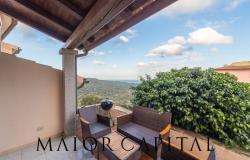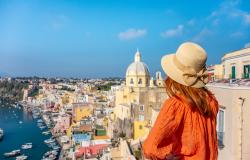(ANSA) - Italy's architects are on a war footing with their foreign counterparts, whom they accuse of 'invading' their home turf. Exasperated by what they say is a growing tendency to put non-Italians before nationals when it comes to assigning the country's most prestigious building projects, the architects have fired off a protest to the government and head of state Carlo Azeglio Ciampi.
The appeal, signed by 35 top Italian architects including Vittorio Gregotti, Guido Canella, Franco Purini, Aimaro Isola, Ettore Sottsass, Cesare Stevan and Paolo Portoghesi, urged the government to do more to promote "the development in Italy of a new architecture".
The protesters said the situation had become "dramatic", reeling off a list of major projects that had been awarded to the foreign big names of architecture, such as America's Richard Meier, England's Norman Foster, Chinese-born American Ieoh Ming Pei and Japan's Arata Isozaki.
Calling on Ciampi and Premier Silvio Berlusconi to defend national traditions, the frustrated architects said Italian architecture was a "vital cultural resource that must not be further thwarted or ignored."
They said the last straw had come earlier this week when Milan's city council greenlighted a major project to transform the city's Trade Fair district. Considered one of the most important architectural projects currently under way in Europe, the winning design was put forward by a foreign trio consisting of Isozaki, Polish-born Daniel Libeskind and Iraqi-born British citizen
Zaha Hadid - the only woman to win the prestigious Pritzker architecture prize. One Italian, Pier Paolo Maggiora, will collaborate with the three.
The project centres around the creation of three skyscrapers: a 170-metre high 'sail' designed by Libeskind, a 185-metre high twisting skyscraper designed by Hadid and a 215-metre high tower by Isozaki.
But it has already stirred controversy with some critics rejecting the project as an example of a globalised style of architecture that can be found anywhere in the world. In their protest, the Italian architects noted that the project would be exhibited in Argentina at the end of this month, where it would be flagged as a symbol of the 'new Italy'.
They stressed that other major projects by imported architects had also been plagued by controversy, including Meier's Ara Pacis museum in Rome. Due to be unveiled later this month, the new structure will contain the Altar of Peace built by Augustus in the 1st century BC to celebrate his war victories.
But the stark glass building designed by Meier has been compared by some critics to a petrol station while others have lamented the so-called "Los Angelesation" of Rome. Similarly, Isozki's design for a new exit for the Uffizi Museum in Florence, which won an international competition in
1998, has been unflatteringly likened to a bus shelter and a bed frame.
One enraged critic threatened to bomb the portico should it ever be built.
Plans for the seven-storey, canopy-like structure were put on hold earlier this year after excavations on the site revealed the remains of a number of medieval houses which were levelled when the museum was built in the 16th century.
Top Spanish architect Santiago Calatrava's winning design for adding a fourth bridge across Venice's main waterway, the Grand Canal, has also divided the critics. The innovative footbridge in steel and glass has been blasted as out of keeping with Venice's unique architecture and questions have been raised about its accessibility to the handicapped.
Italy's frustrated architects complained in their appeal to the government that foreign architects enjoyed more opportunities to shine than they did. "They have been able to carry out great works of social interest in their own countries thereby putting themselves in a good light," they said.
The architects contrasted this situation with Italy, where they said a lack of resources, urban underdevelopment, bureaucracy and "vetoes" had "deprived our architects of similar work opportunities".
Italian daily Corriere della Sera, which highlighted the architects' appeal in its Wednesday edition, tempered the complaints by pointing out that the foreign architects working in Italy had had to win competitions to do so.
It also stressed that there was nothing to stop Italians working abroad, as the Genoese master Renzo Piano frequently does. Piano, Italy's most famous contemporary architect, has designed a host of major buildings around the world including the Pompidou centre in Paris, built in collaboration with English architect Richard Rogers.
Corriere quoted Dante Oscar Benini, the designer of a twin leaning tower to be built in Pisa, as saying: "I agree that our country has been immobile on this front for 50 years... but the winning architect is the one who presents the best project."









